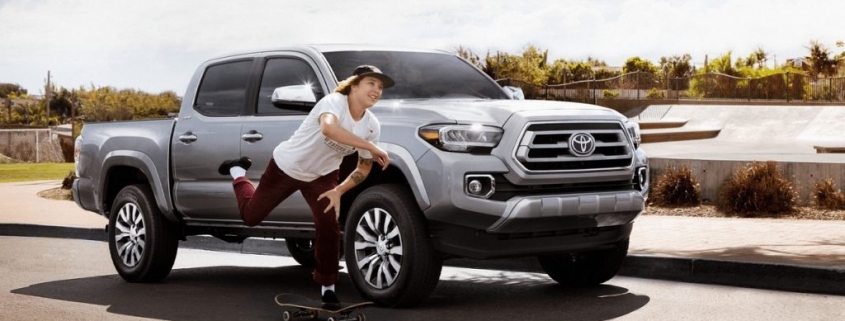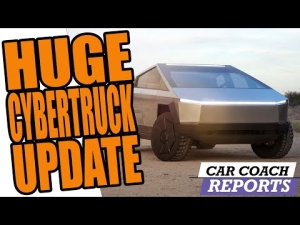The Toyota Tacoma’s Biggest Weakness
The 2021 Toyota Tacoma is a best-selling truck with superior crash prevention and decent crash test ratings. Yet it’s far from perfect. The Insurance Institute for Highway Safety tested it and published their findings. So what is the 2021 Toyota Tacoma’s biggest weakness?
The 2021 Toyota Tacoma has mostly good crash test ratings – except for one
The 2021 Toyota Tacoma has good crash test ratings for its small overlap front: driver, as well as moderate overlap, side, roof strength, and head restraints and seats. What is the Toyota Tacoma’s biggest weakness? It’s small overlap front: passenger side crash test rating, which is only acceptable.
Within the small overlap front: passenger side crash test subcategories, most of the ratings are also good. The exception, and likely the reason that it received only an acceptable rating, are the passenger injury measures, specifically the lower leg/foot. This rating was poor, which as you might guess, is the worst it can get. The passenger restraints and dummy kinematics are also just acceptable.
What are the small overlap crash tests?
The IIHS does a small overlap crash test on the driver and passenger sides. The small overlap front: driverside test measures how well a car does when the front left corner of the vehicle hits something like a tree or another car.
Initially, the IIHS started doing small overlap crash tests because they realized that car manufacturers weren’t paying attention to the front corners of the cars they made, and injuries and fatalities were high in accidents involving these areas of vehicles. They began testing the small overlap front: driver side to remedy this.
In response, car manufacturers began improving the safety of the driver side of the car. However, many car manufacturers didn’t carry these safety improvements over to the passenger side of the car, and it was much more dangerous on that side of the vehicle. Now that the IIHS tests both sides, overall safety is improving, but it still isn’t perfect.
To conduct the small overlap frontal tests, a vehicle travels at 40 mph. The front left or right portion of the car (depending on whether it’s the driver or passenger test) strikes a five-foot barrier.
Why are the small overlap crash tests important?
The small overlap front: driver and passenger tests are important because they test how well the airbags and seatbelts do. They also gauge the effectiveness of safety cages.
Safety cages are meant to withstand a crash. They work with crush zones which distribute the energy from a crash in a way that should reduce the impact on people in the car. These crash zones are in the middle of the front of the car, which is why it’s important to test the outer edges of the car.
In accidents like the small overlap crashes tests, the crash energy goes into those front corners. This can include the wheel wells, which can then be pushed into the vehicle. When this happens, it can cause injury to the driver and passengers in the vehicle. The small overlap tests determine how well the safety cage does when the force on a car isn’t on the crush zones.Overall, this midsize pickup is just an okay choice. The Tacoma’s biggest weakness is certainly that crash test rating. If you’re looking for a midsize pickup truck, there aren’t a lot of options that have good crash test ratings across the board. If you’re willing to look for a bigger pickup truck, the Ram 1500 crew cab is a pretty good choice. Otherwise, pay attention to the crash test ratings and safety features in the truck you’re shopping for, and drive carefully.
RELATED: There Are a Whole Bunch of Trucks You Shouldn’t Buy If You Have Little Kids
The post The Toyota Tacoma’s Biggest Weakness appeared first on MotorBiscuit.







